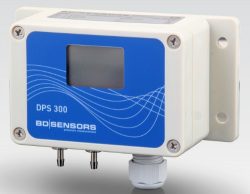 Low differential pressure transmitters for measuring very small pressure differences between two measurement points either side of a ventilation fan, both sides of an air filter or either side of clean room wall.
Low differential pressure transmitters for measuring very small pressure differences between two measurement points either side of a ventilation fan, both sides of an air filter or either side of clean room wall.
These low differential pressure transmitters have a 4 to 20 milliamp output scaled over a few millibar or a few inches of water, and are typically used in applications matching these requirements:
- Input: Low differential pressures of a few millibar.
- Output: 4-20mA current loop with options for a display and alarm contact switches
- Applications: Ventilation flow, filter condition, negative/positive pressure between rooms.
- Industry: HVAC, Clean Rooms, Hospitals, Laboratories, Pharmaceutical, Medical
- Media Compatibility: Mostly air and non-corrosive gases
Choose a low differential pressure transmitter from the list below to view product specification details and request a price quotation.
Products
 DPS300 User Switchable Pressure Range, Volts or Current Output Low DP Sensor - The DPS 300 is a low range HVAC differential pressure sensor. The lowest possible pressure range is 0...100 pascals. 2 or 3 switchable pressure ranges, plus volts or current output are included with most standard configurations.
DPS300 User Switchable Pressure Range, Volts or Current Output Low DP Sensor - The DPS 300 is a low range HVAC differential pressure sensor. The lowest possible pressure range is 0...100 pascals. 2 or 3 switchable pressure ranges, plus volts or current output are included with most standard configurations.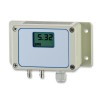 DPS200 HVAC Differential Pressure Transmitter - Differential air pressure sensor with a 10 volt or a 4-20mA output for building ventilation applications. Ranges from 0 to 6 mbar up to 0 to 1000 mbar.
DPS200 HVAC Differential Pressure Transmitter - Differential air pressure sensor with a 10 volt or a 4-20mA output for building ventilation applications. Ranges from 0 to 6 mbar up to 0 to 1000 mbar.
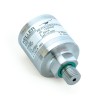 41X High Precision Low Range Pressure Transmitter
41X High Precision Low Range Pressure Transmitter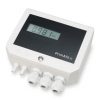 PrimAtü 10 Low Cost Low Range Differential Air Pressure Transducer
PrimAtü 10 Low Cost Low Range Differential Air Pressure Transducer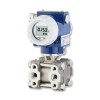 XMD Process Plant DP Cell Differential Pressure Transmitter
XMD Process Plant DP Cell Differential Pressure Transmitter DPS Low Differential Pressure Transmitter
DPS Low Differential Pressure Transmitter
Applications
 4 inch water column range 4-20mA differential pressure sensor for liquids - Low range wet/wet dp sensor for measuring differential pressure of a liquid from 0 to 4 inches of water column.
4 inch water column range 4-20mA differential pressure sensor for liquids - Low range wet/wet dp sensor for measuring differential pressure of a liquid from 0 to 4 inches of water column. -3 to 3 psi dp range high accuracy 4-20mA air pressure transmitter for water treatment use - A high accuracy low bi-directional range differential pressure transmitter for water treatment use to measure pressure of air over a range of -3 to 3 psi differential from two 1/4”-18 NPT internal process connections, and sending the corresponding 4-20mA signal through the 1/2" NPT internal cable gland electrical connection.
-3 to 3 psi dp range high accuracy 4-20mA air pressure transmitter for water treatment use - A high accuracy low bi-directional range differential pressure transmitter for water treatment use to measure pressure of air over a range of -3 to 3 psi differential from two 1/4”-18 NPT internal process connections, and sending the corresponding 4-20mA signal through the 1/2" NPT internal cable gland electrical connection. -200 to 200 Pa bi-directional range 4-20mA output dp pressure transmitter for venturi tube - A bidirectional low range pressure transmitter for venturi tube use to measure pressure of air in a venturi tube over a range of -200 to 200 Pa from the 6.6mm dia x 11mm barbed connections process connection, and sending the corresponding 4-20mA signal through the M12 x 1.5 cable glands with 5 internal screw terminals electrical connection.
-200 to 200 Pa bi-directional range 4-20mA output dp pressure transmitter for venturi tube - A bidirectional low range pressure transmitter for venturi tube use to measure pressure of air in a venturi tube over a range of -200 to 200 Pa from the 6.6mm dia x 11mm barbed connections process connection, and sending the corresponding 4-20mA signal through the M12 x 1.5 cable glands with 5 internal screw terminals electrical connection. -3 to 4 mbar dp range 4-20mA ATEX approved biogas pressure sensor for process control use on a 1bar line - A low range differential pressure sensor for process control use to measure pressure of biogas over a range of -3 to 4 mbar diff on a 1 bar biogas line from two 1/4 NPT female process connections, and sending the corresponding 4-20mA signal through the weatherproof cable electrical connection.
-3 to 4 mbar dp range 4-20mA ATEX approved biogas pressure sensor for process control use on a 1bar line - A low range differential pressure sensor for process control use to measure pressure of biogas over a range of -3 to 4 mbar diff on a 1 bar biogas line from two 1/4 NPT female process connections, and sending the corresponding 4-20mA signal through the weatherproof cable electrical connection.
 1 inH2O differential intrinsically safe 4-20mA out air pressure sensor for HVAC use
1 inH2O differential intrinsically safe 4-20mA out air pressure sensor for HVAC use 3inH2O differential 4-20mA nitrogen pressure sensor and display for annealing furnace flow control use
3inH2O differential 4-20mA nitrogen pressure sensor and display for annealing furnace flow control use Biogas HDPE cover PD blower pressure sensor
Biogas HDPE cover PD blower pressure sensor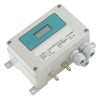 Minus 0.25 inWG differential pressure transmitter for negative air pressure difference
Minus 0.25 inWG differential pressure transmitter for negative air pressure difference Solvent compatible +/-100mWG dp transmitter with PTFE seals
Solvent compatible +/-100mWG dp transmitter with PTFE seals Wet wet DP sensor for 10 inches of water range
Wet wet DP sensor for 10 inches of water range DP transmitter for 10bar water line strainer cleaning indication
DP transmitter for 10bar water line strainer cleaning indication Low range ATEX approved 100 Pascal range DP transmitter
Low range ATEX approved 100 Pascal range DP transmitter
- Biogas ATEX 4-20mA pressure transmitter for 0 to 20 mbar range
- ATEX rated room ±100 Pa differential pressure transmitter
- Bidirectional -50 to +50 Pa diff pressure transmitter with user calibration adjustment
- Bi-directional -20 to +100 Pa clean room air diff pressure transmitter
- 100 Pa bi-directional range differential air pressure transmitter
- Minus 100 pascal suction pressure transmitter
- 0.06 inWG positive air pressure transmitter for HVAC blower fan control
